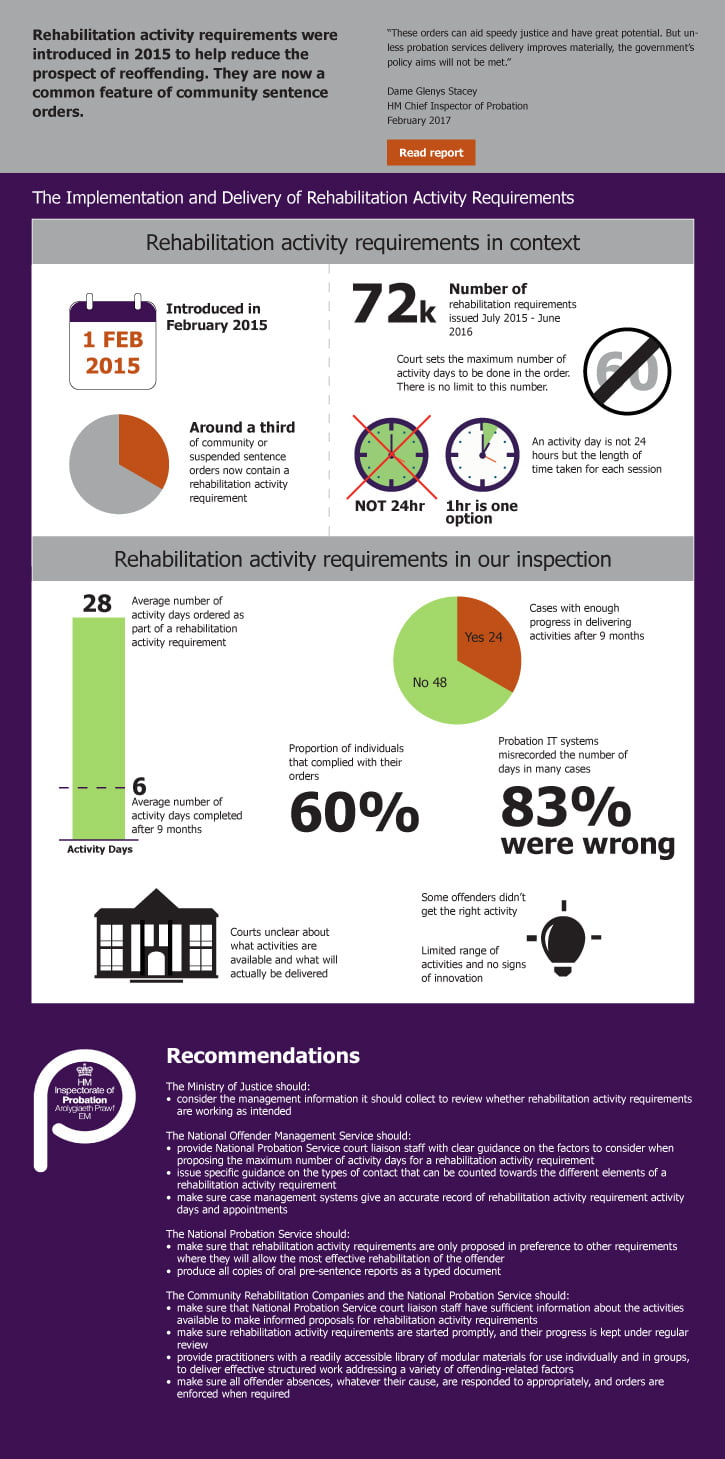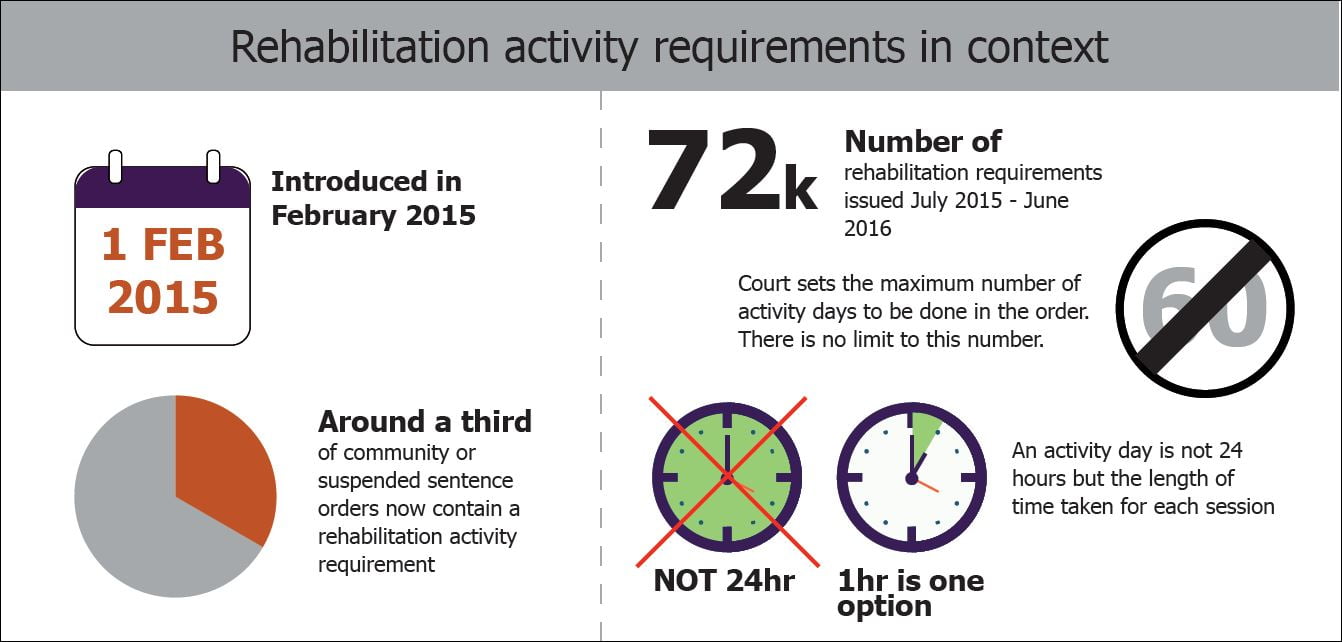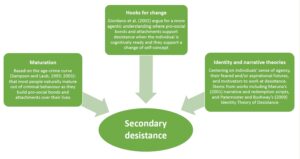NPS and CRCs at fault
Rehabilitation activity requirements (RARs), a central feature of many community sentences, are not being delivered properly.
That’s the conclusion of Dame Glenys Stacey, Chief Inspector of Probation, on today’s (22 February 2017) report, The Implementation and Delivery of Rehabilitation Activity Requirements. RARs are flexible provisions in community sentences which enable probation providers to do whatever they think will work best with individuals to reduce their reoffending, but all too often, too little is actually being done.
What are rehabilitation activity requirements?
RARs were introduced in 2015 alongside the new probation delivery arrangements known as Transforming Rehabilitation to ensure flexible and efficient sentencing, and at the same time liberate the new (mainly private) probation providers and encourage innovation. The aim was to reduce reoffending. One in three community orders now includes a RAR provision in the order. Community Rehabilitation Companies (CRCs) carry the large majority of these cases. The court specifies a maximum number of days of activity to be undertaken, with probation providers then free to decide what happens from then on.
Findings
Inspectors found that not enough was being done under these orders to meet the government’s policy aims. Instead they found a lack of impetus and direction in a good proportion of cases and as a consequence, early signs of a reduction in confidence from judges and magistrates.
Not enough was being done by the National Probation Service (NPS) in court reports to advise sentencers about what can be done locally under these provisions, or whether or not this was the most suitable sentencing option. Other government initiatives, for example changes to speed up sentencing, meant that staff did not always have time for the more detailed checks and assessments necessary before court, to support other sentencing recommendations which might in some cases be more suitable, such as drug or alcohol treatment.
Subsequent decisions about the work to be done tended to be influenced by the limited range of activities available rather than the factors most clearly linked to the offending. What is more, too little activity had happened in the cases inspectors looked at, and in over one in ten there had been no purposeful activity at all. In cases where those sentenced did not turn up for appointments, the response by CRCs was inadequate, leading to a lack of sufficient progress for those individuals and reducing sentencer confidence in these sorts of community orders. These problems were made worse by outdated IT systems which were not designed to capture the new pattern of contacts, meaning records were confused and inaccurate.
As you can see from the official infographic below, the standard of performance was alarming to say the least:
- Although 28 was the average number of activity days ordered by a court as part of a RAR, the average number completed after 9 months was just 6
- Two thirds of cases had not made sufficient progress in delivering activities after 9 months
- Probation IT systems misrecorded the number of days in 83% cases.
Recommendations
The inspectors’ recommendations are, unsurprisingly, blunt and to the point:
The Ministry of Justice should consider the management information it should collect to review whether rehabilitation activity requirements are working as intended.
Her Majesty’s Prison and Probation Service (NOMS’ successor) should:
- provide National Probation Service court liaison staff with clear guidance on the factors to consider when proposing the maximum number of activity days for a rehabilitation activity requirement
- issue specific guidance on the types of contact that can be counted towards the different elements of a rehabilitation activity requirement
- make sure case management systems give an accurate record of rehabilitation activity requirement activity days and appointments.
The National Probation Service should:
- make sure that rehabilitation activity requirements are only proposed in preference to other requirements where they will allow the most effective rehabilitation of the offender
- produce all copies of oral pre-sentence reports as a typed document.
The Community Rehabilitation Companies and the National Probation Service should:
- make sure that National Probation Service court liaison staff have sufficient information about the activities available to make informed proposals for
rehabilitation activity requirements - make sure rehabilitation activity requirements are started promptly, and their progress is kept under regular review
- provide practitioners with a readily accessible library of modular materials for use individually and in groups, to deliver effective structured work addressing a
variety of offending-related factors - make sure all offender absences, whatever their cause, are responded to appropriately, and orders are enforced when required.
Within these recommendations, the report makes it clear that it is the CRCs in particular who need to step up to the mark.

Conclusion
As is my habit with inspection reports, I like to leave the last word to Chief Inspector Dame Glenys Stacey. In this case, I include two typically direct quotes; the first from the foreword to the report and the second from the accompanying press release:
These orders have great potential. Better IT, more certainty and stability for Community Rehabilitation Companies and more expansive supply chains will all help deliver that potential, but inherent tensions remain, as sentencers must be able to sentence with confidence – with sufficient information, and also sure that probation services will deliver competently in all relevant respects. Ultimately, unless probation service delivery improves materially, government’s policy aims will not be met.
These orders have a key role to play in reducing reoffending. Government hoped that the new probation companies would use them to do more to rehabilitate offenders, but in fact less than ever is being done. So far this has been a triumph of experience over hope, rather than hope over experience. We advise government to consider whether, with changes to probation company contracts these orders can be made to work well, or whether it is time for a more fundamental rethink.









3 Responses
RAR are garbage and being fudged by CRC. It is a mess.
Biggest unclarity for Courts and probationers is how the RAR fits with the overall length of the sentence the Court wishes to pass and whether supervision appts beyond the specified RAR days will be offered and are enforceable. And I can’t see for the life of me how wasting time typing up an ORAL report ( the clue is in the name) is either an efficient use of resources or would contribute anything to improving the situation described.
Thanks Judith, it’s always really helpful to get a front line perspective. So it’s not clear how RARs fit into the legal structure of a community sentence? No wonder the IT system is confused. ..